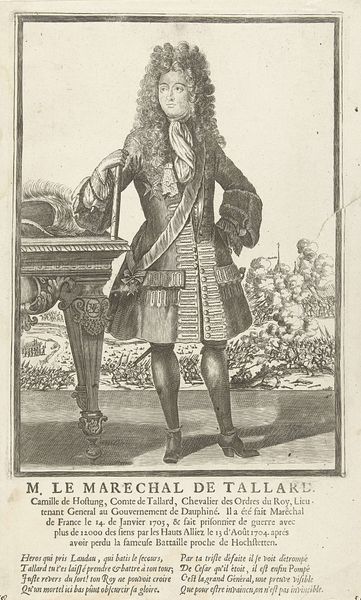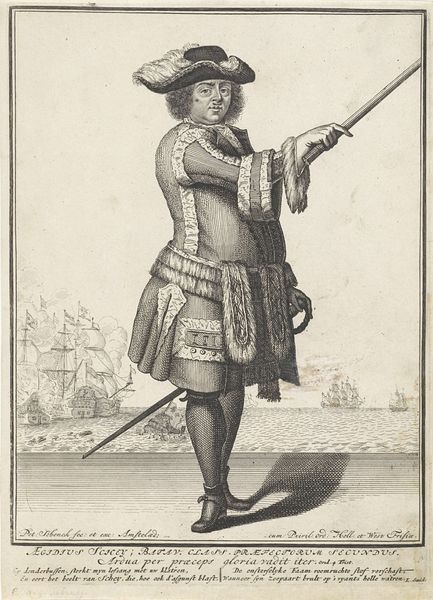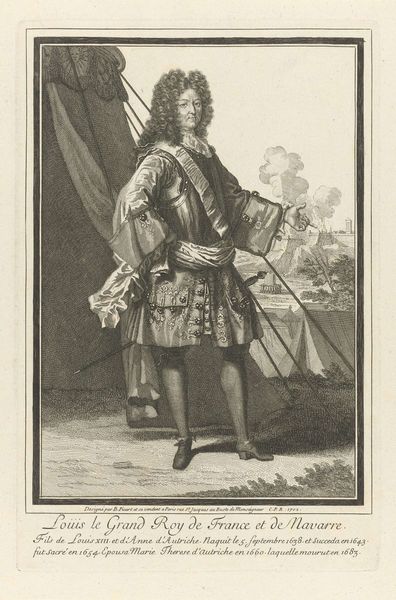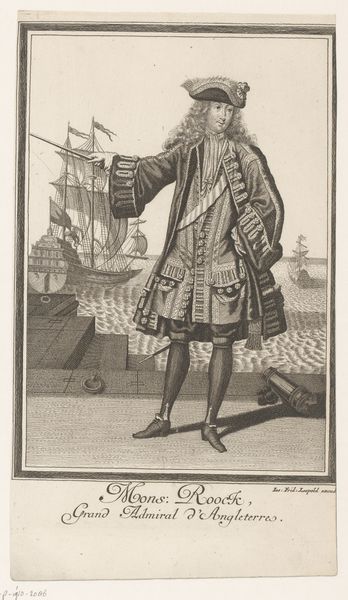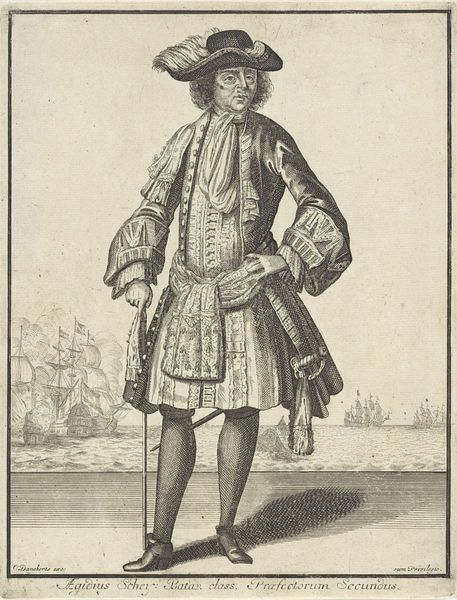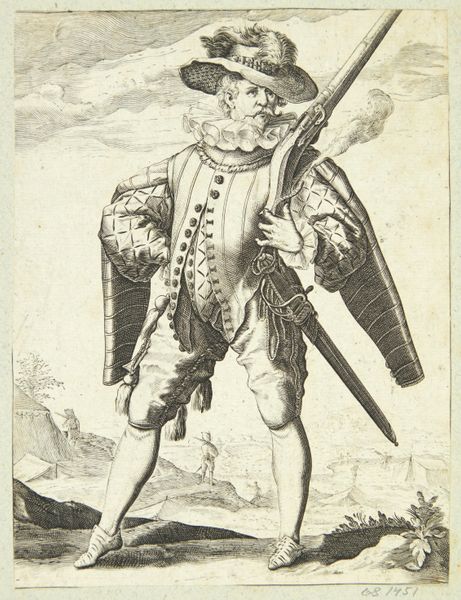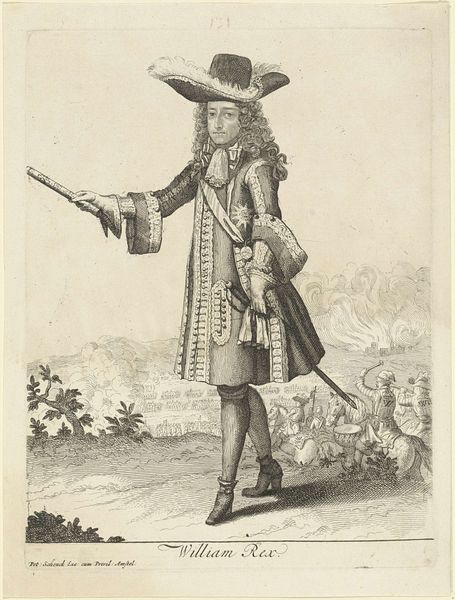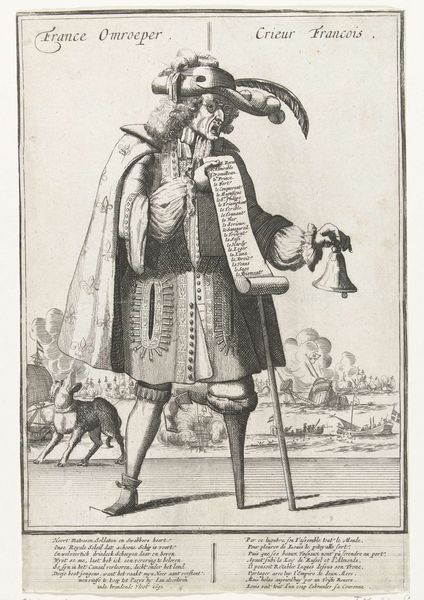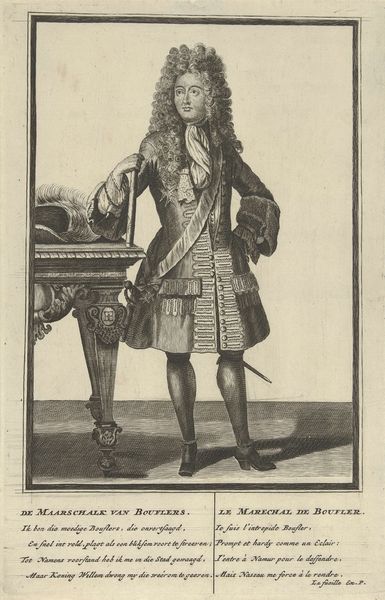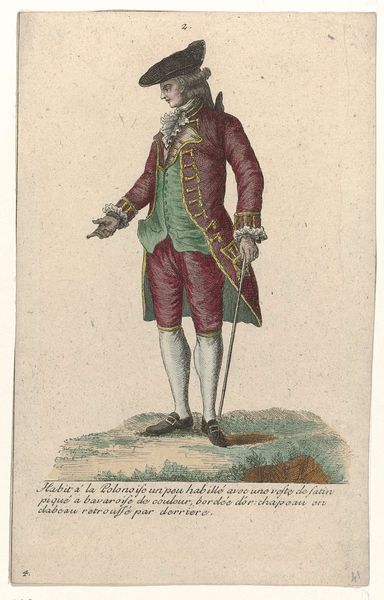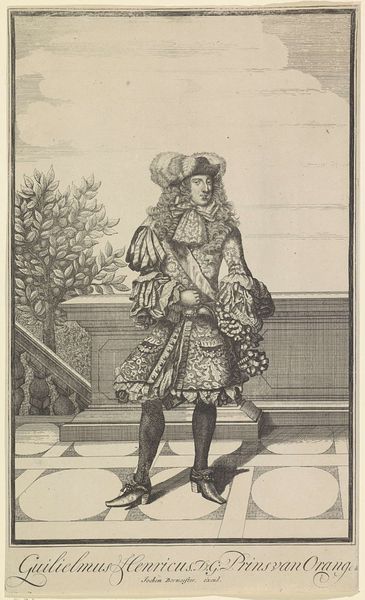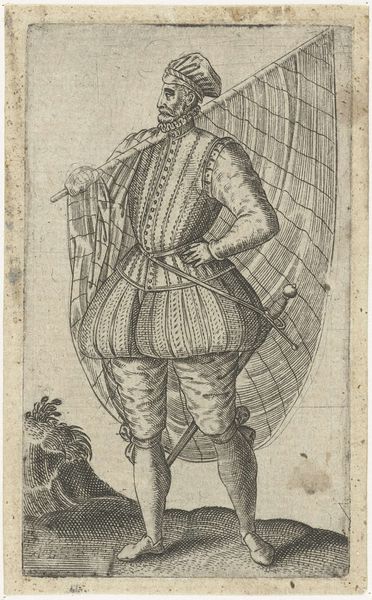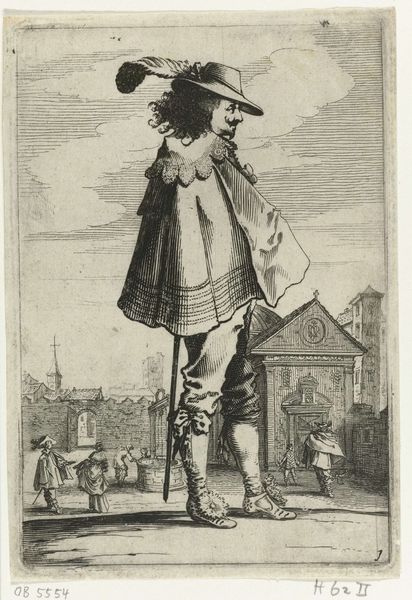
print, intaglio, paper, engraving
#
portrait
#
baroque
# print
#
intaglio
#
traditional media
#
paper
#
historical fashion
#
history-painting
#
engraving
Dimensions: height 257 mm, width 160 mm
Copyright: Rijks Museum: Open Domain
Curator: This print, dating from around 1696, presents us with a portrait of Marshal de Luxembourg, engraved by Pieter van den Berge. The piece, rendered on paper using the intaglio technique, immediately strikes one as…unsettling, wouldn’t you agree? Editor: Absolutely. There's a palpable tension in the image. The subject's flamboyant attire and confident posture clash sharply with the grotesque figures lurking in the background. It makes me think about how power is often built upon the suffering and exploitation of others. Curator: Precisely. The context is crucial here. Luxembourg, a renowned military figure of his time, is shown not just as a leader, but as a symbol of French dominance. The work needs to be viewed alongside the sieges of cities like Dinant, suggested by the skyline at left. Editor: That element of "French dominance" is what disturbs me. It evokes that uncomfortable association between the violence of the battlefield and this idea of an unflinching aristocracy; notice that the bodies of the dead build to a small hilltop that overlooks more chaos behind it. Are those flying devils? This really does connect violence to something infernal and unnatural. Curator: That brings me to the allegorical aspects. The figures surrounding him seem like tormented souls or perhaps even devils aiding his cause. The intaglio is not a spontaneous drawing; van den Berge very likely meant to associate him, perhaps indirectly, with darker, ungodly, elements. Editor: And what about that pen he’s holding? Almost a literal tool of conquest – signing treaties or issuing orders. And yet he’s not looking at anything. His gaze drifts upward in some way – perhaps in reflection of all of the terrible chaos he causes. It makes the act seem even more impersonal, like he isn’t there. The almost comic-book devils behind him – with the way they carry men – underscore his power but strip them of dignity. Curator: It’s an interesting subversion, offering what appears to be a triumphant portrait, while subtly exposing the darker underbelly of military glory. The Rijksmuseum situates the work not merely as art, but as social and historical commentary in print. It’s a document to examine and critique power structures. Editor: Absolutely. By prompting such discomfort, the piece can prompt a more nuanced understanding of the human cost inherent to the making of history. The work also makes me question those who wield power. Do they hear the screaming and turmoil or can they block it out?
Comments
No comments
Be the first to comment and join the conversation on the ultimate creative platform.
